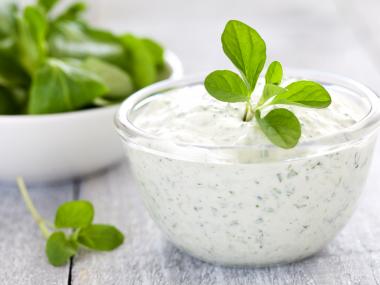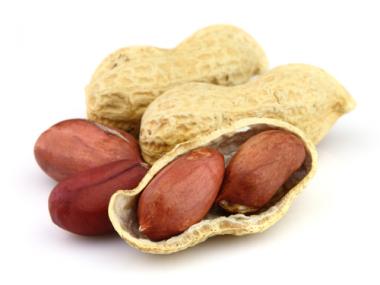What is a Low Histamine Diet?
Intrigued by the buzz on the Low HIstamine Diet? Nutrition Diva sorts fact from fiction about which foods are high in histamines, and who might benefit from avoiding them.
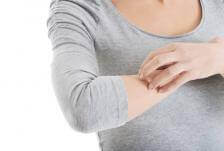
See also: What is Histamine Intolerance?
The challenge, as I explained last week, is that there’s a lot of conflicting information about the histamine content of foods. This week, I’m going to try to clarify, and hopefully simplify, which foods you might want to avoid if you’re inclined to test the theory on yourself.
Sponsor: Squarespace, the all-in-one platform that makes it fast and easy to create your own professional website, e-commerce site, or online portfolio. For a free trial and 10% off, go to squarespace.com/diva and use offer code DIVA.
Where do Histamines Come From?
At first glance, lists of high-histamine foods that you’ll come across on the Internet can seem somewhat random: sauerkraut, pepperoni, and strawberries? You’ll also notice a lot of foods that we generally think of as healthy, such as fish and yogurt, listed there. I think these lists will make more sense to you once you understand where histamines come from.
Most of the histamine content in food is the result of bacterial activity. Although you may not like to think about it, bacteria are almost always present in raw meat and fish. In fact, that’s what gives raw meat such a short shelf-life—the bacteria eventually cause the meat to spoil.
Refrigeration slows down bacterial activity (and delays spoilage), but the longer meat is stored before (or even after) it’s cooked, the higher the histamine content will be. Unfortunately, although cooking kills bacteria, it does not remove histamines.
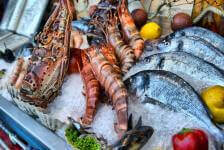
Histamines in Cultured and Fermented Foods
With cultured and fermented foods and beverages, of course, the bacteria are there on purpose. Indeed, the presence of probiotic bacteria is considered to be beneficial.
However, the bacterial activity that turns cabbage into sauerkraut, milk into yogurt, and grapes into wine or vinegar can also produce histamines. But the histamine content of fermented foods will vary dramatically, depending on exactly how and where it was prepared. With that in mind, let’s take a look at which foods are likely to be the highest in histamines.
 Which Foods are High in Histamines?
Which Foods are High in Histamines?
- Cured and fermented meats, such as pepperoni and salami, can be particularly high in histamine.
- Smoked or canned fish, as well as shellfish and any fish that is not extremely fresh, may also contain significant amounts of histamines.
- Lacto-fermented vegetables, including traditionally prepared sauerkraut, pickles, and kim-chi, may be particularly high in histamines.
- Cheese is another common culprit—and aged cheeses tend to be higher in histamines than younger cheeses, because the bacteria have had longer to work. Cultured dairy products, such as yogurt and kefir, are much lower in histamines than cheese. And contrary to some sources on the Internet, fresh cheeses like paneer, cottage cheese, and ricotta, are not likely to be significant sources of histamines, because these are produced by adding acid to milk rather than culturing it with bacteria.
- Red wine and beer both contain a moderate amount of histamine. White wine tends to be a bit lower than red wine, but champagne (tragically) is extremely high. Clear spirits such as gin, vodka, and rum are generally low in histamines—but the alcohol they contain can block the elimination of histamines from the body.
- Spinach and eggplant—for reasons I can’t explain—have been determined to have relatively high histamine content.
- Vinegar, miso, and soy sauce, all of which are fermented, can contain histamines. But because these foods are usually consumed in relatively small quantities, the amount of histamines per serving is actually fairly small.
So what about all those other foods that you’ll see when Googling these lists–things like strawberries, citrus, and cinnamon? These foods are rumored to be “histamine-releasing” foods, but this effect is not well supported by evidence.
There’s No Such Thing as A Histamine-Free Diet
The goal of a low-histamine diet is to reduce your dietary histamine load—not necessarily to zero, which would be virtually impossible, but to below the threshold that triggers symptoms. That threshold will be lower for some people than others.
Plus, your tolerance for histamine-containing foods and beverages may also fluctuate. If you suffer from seasonal allergies, for example, you may find that your tolerance is lower during these periods.
Rather than trying to completely eliminate every food that’s ever been found (or rumored) to contain histamines (which would be extremely restrictive), I suggest avoiding those foods that are most likely to be high in histamines, including cured meats, smoked and canned fish, shellfish, cheese, miso, spinach, red wine, beer, and champagne. In addition, you might want to moderate your intake of foods which may contain small amounts of histamines, such as white wine, yogurt, kefir, vinegar, and soy sauce.
At the same time, you’ll want to make sure you’re not blocking your body’s ability to breakdown and eliminate whatever histamines you do take in. The most common over-the-counter culprits are alcohol, acid-blockers, and NSAIDs. In fact, symptoms of histamine intolerance can sometimes be completely resolved merely by reducing the use of drugs or alcohol, which block the body’s ability to breakdown histamines from foods. No special diets required!
Who Needs a Low Histamine Diet?

If it doesn’t seem to make any difference, histamine intolerance may not be your issue. And if you don’t have these symptoms to begin with, I don’t think there’s any general benefit to be had from avoiding the small amount of histamines that you’d get from a regular diet. Although it seems to be shaping up as the next diet fad, a low-histamine diet is not a panacea for clearer skin, boundless energy, or effortless weight loss.
References:
Dang A, Pesek JJ, Matyska MT. The use of aqueous normal phase chromatography as an analytical tool for food analysis: determination of histamine as a model system. Food Chem. 2013 Dec 15;141(4):4226-30.
Halász A, Baráth A, et al. Biogenic amines and their production by microorganisms in food Trends in Food Science & Technology, Volume 5, Issue 2, February 1994, Pages 42-49.
Anna , Ágnes Livia Simon-Sarkadi, Wilhelm Holzapfel
Lavizzari T, Veciana-Nogués MT, et al. Occurrence of biogenic amines and polyamines in spinach and changes during storage under refrigeration. J Agric Food Chem. 2007 Nov 14;55(23):9514-9.
Maintz L, Novak N: “Histamine and histamine intolerance,”Am J Clin Nutr. 2007 May;85(5):1185-96.
Marcobal, A, Polo, MC, et al. Biogenic amine content of red Spanish wines: Comparison of a direct ELISA and an HPLC method for the determination of histamine in wines Food Research International, 38 (2005), pp. 387–394.
Naila A, Flint S, et al. Control of biogenic amines in food–existing and emerging approaches. J Food Sci. 2010 Sep;75(7):R139-50.
Ruiz-Capillas C, Jimenez-Colmenero F. Biogenic Amines in Meat and Meat Products, Critical Reviews in Food Science and Nutrition, 2005 44:7-8, 489-599,
Ten Brink B, Damink C, Joosten HM, Huis in ‘t Veld JH. Occurrence and formation of biologically active amines in foods. Int J Food Microbiol. 1990
Aug;11(1):73-84.
Photos of seafood, cured meats, and itching courtesy of Shutterstock.
You May Also Like…
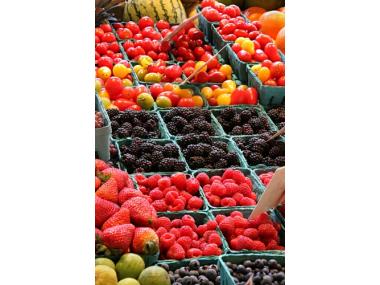


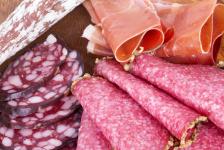 Which Foods are High in Histamines?
Which Foods are High in Histamines?
